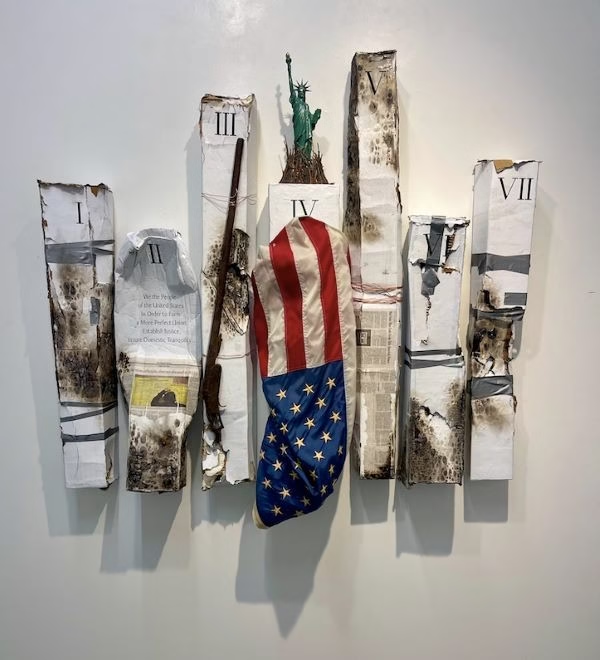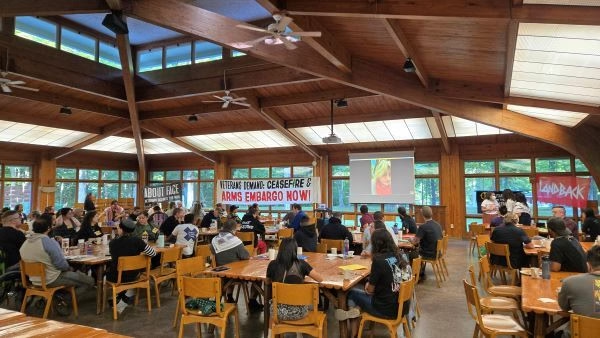This month, Angelenos who truly believe music is life will be able to get treated to three performances at three different venues in the Los Angeles area by Havana-born pianist, composer, and bandleader Dayramir González, who is on a major North American tour for his Sept. 3 release of V.I.D.A. (Verdad, Independencia, Diversidad & Amor) – a special edition, expanded version of his 2024 album.
The 41-year-old waxed on about life (both his album and the metaphysical idea of life), saying, “Life is precious, beautiful, and fragile.”
He said, for him, “It’s about remembering to pause, to breathe, to love, to celebrate. It’s about transforming obstacles into triumphs, pain into beauty, and silence into music.”
In the United States, the birthplace of jazz, gospel, blues, rock and roll, soul music, hip hop, protest music, and anti-establishment music, artists have been turning out bangers, but not enough are reaching minds and hearts.
V.I.D.A. was recorded with an international all-star cast of artists, including New York bassist Dean Torrey, Argentine drummer Juan Chiavassa, and Chilean percussionist Christian Moraga.
This album is a celebration of 25 years of professionally making music since his first gig at age 15 in a Havana jazz club.
“For me, V.I.D.A. is not just an album — it’s a manifesto of my artistic life so far.”
Twenty-five years ago, I was still a student at UCLA, publishing the black student magazine Nommo. I would receive physical press releases and actual CDs. I got my first Woman Crush Wednesday back then when Hidden Beach Recordings sent me a copy of Jill Scott’s debut album, the tracks of which remained in heavy rotation. The same happened with Erykah Badu’s Mama’s Gun and the Roots ‘ Things Fall Apart. MTV certainly was a mature platform for a lot of music, albeit limited when it came to hip hop, R&B, and soul music. And even more so when it comes to music from outside of the United States. The internet was supposed to democratize access to music. Initially, it did.
But the matrix has started taking over slowly but surely, locking everything behind algorithmic silos, leaving to luck the wide dissemination of good… transformational… inspirational…music. These were my thoughts when I learned of Dayramir’s music from a press release and sought his music on YouTube, only to learn that he has been doing his thing since the early 2000s, and with the quartet with whom he compose V.I.D.A. since 2018, playing in concert halls around the world, but not really heard in the streets of urban centers around the world like it should have been.
In an email exchange, Dayramir said it’s true that today’s landscape for artists is more challenging.
“With fewer mass media platforms and the dominance of tech companies controlling distribution, the pathways to reach a wide audience can feel limited.”
Then he said, “But I’ve always been clear about one thing: I will not compromise the authenticity of my music to fit commercial models. My art is rooted in my heritage, my Afro-Cuban identity, and my Yoruba spirituality — and I want that to shine through without dilution.”
Dayramir says that in his fight against the algorithmic matrix, he‘s been fortunate to build a loyal audience, people who connect deeply with his vision and support his music by attending his concerts and buying music and merch.
“My approach has been to nurture that community by reaching them through as many channels as possible — social media, streaming platforms, live performances, radio shows, magazines, blogs — while always keeping the communication personal and artistic,” Dayramir said.
“At the end of the day, I see myself as a bridge: between Africa and Cuba, between tradition and innovation, between ancestral spirituality and contemporary expression. That mission gives me strength and clarity in a world that sometimes feels oversaturated with content. For me, it’s about depth over mass reach, authenticity over algorithms. And I believe audiences, no matter how fragmented the platforms become, can always feel when the music is real.”
Dayramir said V.I.D.A. explores a broader Afro-Cuban–World–Jazz spectrum and that the sequence of compositions blends danceable grooves, electronic textures, and through-composed structures. He said the melodies are self-reflective, born from moments of struggle, but ultimately celebrate resilience, hope, joy, and personal expression.
He says this, and I realized this whole time I’m wishing artists, musicians in particular, would come out to rescue us from this moment. We need rescuing… real bad.
Dayramir and his quartet are going to be at the Townhouse Venice in Venice on Sept. 21, and at Alvas Showroom in San Pedro on Sept. 22.
Then he will be holding a Masterclass at the Santa Monica College (SMC) Performing Arts Center on Tuesday, September 23, 2025, from 11:15 AM to 12:30 PM. The event is free and is located at the SMC Performing Arts Center, The Edye Second Space, at 1310 11th St, Santa Monica.

















